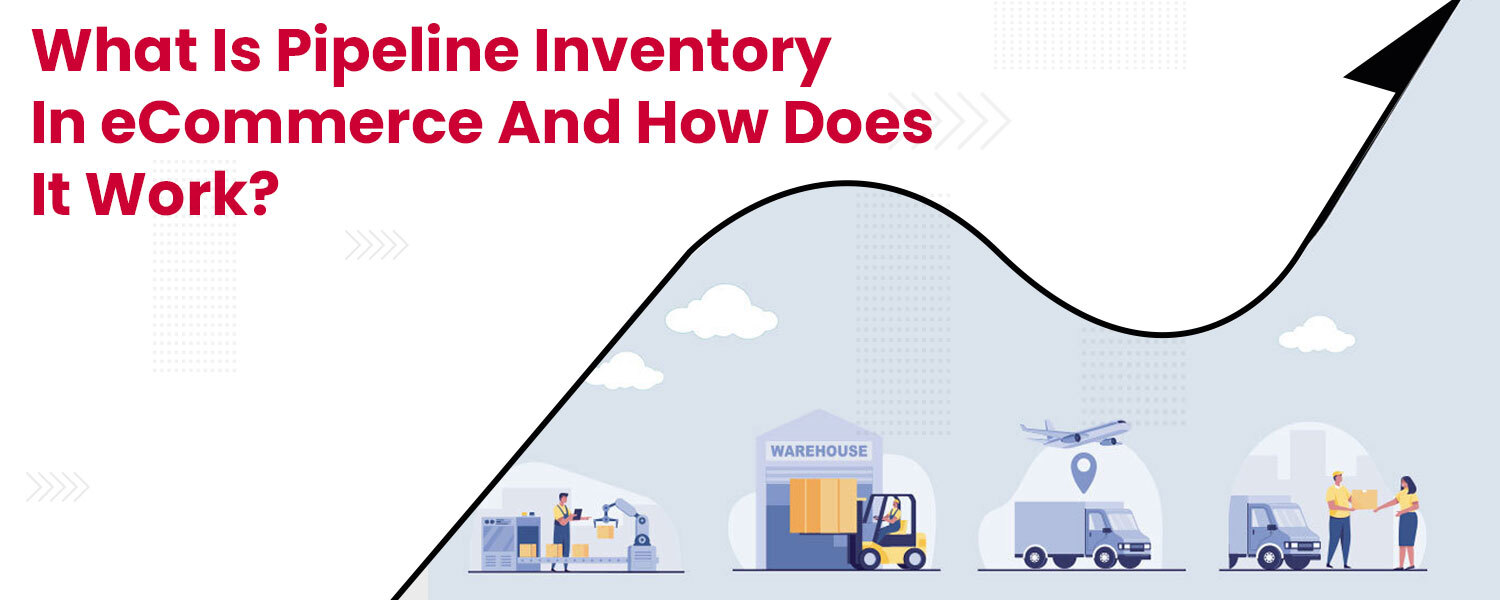Managing or running a business is not child’s play. One needs to learn a number of things beforehand and in the process. For example, a retailer, whether offline or online, might encounter several obstacles while keeping and maintaining consistent stock levels. Alterations and disturbances can lead to emptying warehouses that were once jampacked. Plus, the merchandise that used to be in high demand may now lie idly collecting dust. To eliminate this possibility, we have curated this blog to help you walk through the inventory obstacles in your business. We will talk extensively about pipeline inventory so you can understand efficient and modern ways of handling stocks.
What is Pipeline Inventory?
By definition, the stock currently in transit between locations but is not yet bought by the customer is referred to as pipeline inventory. It is also referred to as pipeline stock. It is crucial to examine since it permits you to ascertain what proportion of your assets area unit control is available.
Pipeline inventory has more to it than the mentioned definition. These days, it has become a major aspect of the eCommerce industry. To boost revenue, online sellers or businesses adopt promising pipeline stock techniques. The biggest risk one can take in an eCommerce industry is to either understock or overstock the merchandise.
For all these reasons, inventory management turns out to be a crucial step in eCommerce. Therefore, aiming for efficient and productive inventory or stock management should be one of the primary goals of any online or offline retailer.
A better pipeline inventory management brings fortune in better budget analysis, protection from inventory loss, friendly carrying costs, and effective sales forecasting. Furthermore, tracking what is lying in your warehouse would not be enough considering the competition.
Most products, aside from raw materials, will require some form of production time. And practically every sort of industry will need some form of conveyance. As a result, it is exceedingly improbable that a retailer would run out of pipeline stock.
Oftentimes, we confuse pipeline inventory with either in-transit inventory or decoupling stock. We may talk and clear the differences some other time. For now, let’s just focus on the key subject and look at how it works.
Pipeline Inventory: An Illustration
Here is an instance from the real world to better explain the concept. The past Christmas, there was a supply and demand mismatch for a specific next-generation gaming system. As a result, several offline and online retailers offered pipeline inventory for sale. It was due to the long lead time for consoles, which ranged from several weeks to months. As a result, gaming stores sold out of their existing stock even though the consoles were not practically present during the sale period.
In such times, eCommerce businesses which used their pipeline inventory to the rescue were able to satisfy the high demand. They were able to pre-sell their stocks using the pipeline inventory. It would have not been possible had there been no knowledge of the stocks and pipeline inventory. Losing out on valuable sales was the only way out for those unfamiliar with pipeline inventory.
As another example, suppose a toy retailer buys a certain stock of toys from a company in China. Now, even though the commodity did not reach the retailer, it is still counted to be under his pipeline inventory.
How to do the Math?
To fully understand the pipeline inventory concept, you must comprehend the formula for calculating the inventory. For instance, the same retailer from the above example buys stock from the manufacturer in China. Consider that the retailer already paid the price to the commodity provider. But, as you might have guessed, there is a gap between the payment and reception of the stock. We call this gap time lead.
If you know the lead time, you have half the equation ready. The next step is to determine the item’s demand rate. That is, how many units they sold concerning the amount of time. The business person can do this once a week, once a month, or a quarter. However, if you want to keep things simple, a demand rate per ordering period is ideal.
Let us now take a look at the formula:
Pipeline Inventory= Lead Time X Demand Rate
Let us assume the stock of toys will reach in 4 weeks, and the retailer is selling out 100 toys per week. Based on this, the pipeline inventory shall be 400 units. Therefore, it means the retailer should place an order for 400 toys.
What about an alternative if there is any one of the aspects missing? In that case, economic order quantity (EOQ) shall be calculated.
Calculating EOQ shall help the retailer comprehend the number of units for which he should place an order. The disadvantage of adopting EOQ is that you need a consumption rate, fixed expenses, and a yearly operating price per unit before you can use it.
Is it Necessary for You?
eCommerce and other businesses require strategic planning and management to function smoothly. Ensure everything is on track and stocks do not run out or bury you under overstocks. A simple way is to track the stock movements, stay updated on disruptions, and consider safety stock. eCommerce stores and online sellers should take pipeline inventory very seriously and avoid losses.
If you want to take an easy road to handle the inventory, NimbusPost is the partner to provide the same. It has the industry’s best logistical experts who can analyze your current inventory and do the calculation to fulfill your pipeline inventory needs. NimbusPost also gives a free trial for some days; so, you can take advantage of that to enjoy the above-listed benefits.




